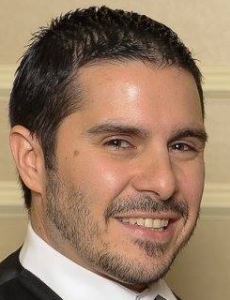A leader since the Ford Model T
Companies that are household names are rarely associated with innovation. Particularly when those companies have been household names since the 1920s. This is especially true for industries like car rental.
A New Approach
Fast forward to 2016. Hertz Global Holdings operates the Hertz, Dollar, Thrifty and Firefly car rental brands in approximately 9,980 corporate and licensee locations throughout approximately 150 countries in North America, Europe, Latin America, Asia, Australia, Africa, the Middle East and New Zealand.

John LaFreniere, Enterprise Architecture Vice President at Hertz
Hertz is now one of the largest car rental companies in the United States. The company reached this level through a dedication to innovation, reinvention and transformation. Hertz maintains this forward-thinking approach to business today.
Faced with an aging technology infrastructure, John LaFreniere, Enterprise Architecture Vice President for Hertz IT is working to transform application development at Hertz. How do you apply across-the-board IT transformation at a company with roots old enough to remember when vaudeville was popular? By taking calculated risks, making smart decisions and determining where the greatest value is.
One of LaFreniere’s first priorities was to begin to move application development away from a monolithic waterfall and on-premise data center approach to cloud-first and DevOps-oriented.
Finding a Solution
After significant research, LaFreniere determined this strategy would be impossible without adopting cloud computing services. To avoid vendor lock-in and to ensure that Hertz was investing in the most open, widely adopted application platform for cloud computing worldwide, LaFreniere chose IBM Bluemix, an implementation of IBM’s Open Cloud Architecture based on the Cloud Foundry open source project. By leveraging what is commonly referred to as platform-as-a-service (PaaS) based on the Cloud Foundry Open Cloud Native Application Platform, LaFreniere has provided his development organization with the flexibility required to implement a microservices based architecture enabling faster, portable, interoperable application development.
“Transformation means wiping the slate clean and producing something completely new,” said LaFreniere. “The technology landscape is changing so quickly, if we don’t develop for the future we will be obsolete before we get our first new application out the door. With Cloud Foundry I know that I am giving my organization what they need to support continuous innovation, completely changing how applications are designed and delivered at Hertz.”

Tim Delesio, Manager of Application Architecture at Hertz
Tim Delesio, Manager of Application Architecture at Hertz, is excited about the future state of IT at the company. “We can’t be successful without moving to a DevOps development methodology and a microservices based architecture. Our existing web development environment in monolithic. There is one set of code, one release cycle. With Cloud Foundry in place, that will all change. Microservices will enable us to scale functions at a much more granular level. We can be flexible with our release cycles and get applications released much more quickly.”
Real World Impact
Some of the first projects to leverage the new platform and methodology will dramatically impact the customer experience at Hertz. When a customer wants to extend their rental today, the only choice is to telephone in. In the future, customers will be able to extend their rental through the website. This means more options for how to do business with Hertz. These additional options translate to an improved customer experience, the holy grail for a service-based company. Delesio is also working on web functionality that will allow customers to accelerate the process of picking up a rental vehicle by providing information typically captured at point-of-sale, prior to pick up. Eventually, the entire Hertz.com website along with additional brands such as Dollar and Thrifty will be moved over to the new platform.
Across-the-board transformation, including the implementation of IBM Bluemix, Cloud Foundry, a microservices based architecture along with the change in development methodology to DevOps and continuous delivery will allow Delesio and his team to deliver this functionality faster and more easily than ever before.
“This isn’t an evolution,” says LaFreniere. “Evolution means taking what’s already there and improving upon it. What’s already there is our past, and what is coming, what is “to be”, is our future. At Hertz, we’re truly transforming. We’re going to be building for web, for mobile and everything we build will be portable to other systems. Cloud Foundry sits at the heart of our future state.”




